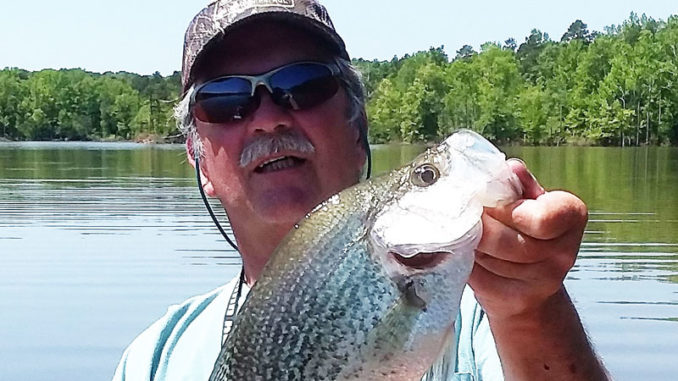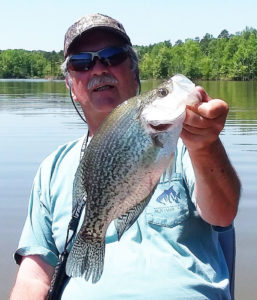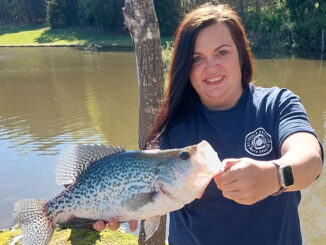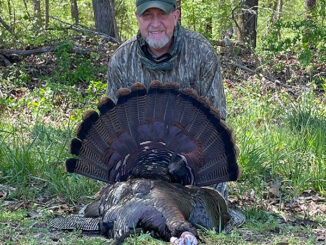
Find the shade, and you’ll find Kerr Lake crappie
When the August sun sends folks searching for shade, Kerr Lake crappie will be doing the same. Slabs utilize the thousands of man-made brush piles anglers have arranged over the years to gain relief for their lidless eyes and find an easy meal.
Whether he’s casting a jig or jigging a spoon, guide Eddie Moody of Roxboro, NC will browse the brush for a creel full of crappie.
“In August, the crappie at Kerr will be patterning the deeper brush,” said Moody (984-363-5256), who runs Slab’s Guide Service. “Most predictably, main-lake brush in the 20- to 30-foot range at normal pool. I’ll be checking those near the main channel where it swings close to the bank and a point runs out to it.”
Although many anglers have waypoints for brush they have placed or found, a newcomer could use his sonar — especially side-scan — to probe a likely area and find a few good spots for a day’s fishing. Moody prefers the area from mid-lake to the dam in August because of the consistently deeper water. After a suitable brush pile is chosen or found, he will figure the distance from the top of the brush to the surface to determine his approach, since the most catchable fish will be close to the top.
Aim for the top of the brush

“I’ll drive over and throw a marker buoy on the upwind side so I’m facing into the wind when I circle back to fish,” Moody said. “If there’s less than 10 feet from the top of the brush to the surface, I’ll back off and throw a 1/16- or 1/8-ounce jig with a Bobby Garland Stroll’R soft plastic in electric chicken. You can count down about a foot per second until you get down to the top and then begin a slow retrieve, adding a Pautzke Crappie Fire Ball during a tough bite.
“If it’s more than 10 feet below the surface, I’ll switch over to a 3/8-ounce Hopkins spoon and jig vertically right over top. When you get deeper than 10 feet, you take up a lot of fishing time waiting for the jig to get to the brush. With most 1500 to 2500 series spinning reels, one backwind equals two feet of line out when you’re measuring down.”
Moody prefers 6-pound Slime Line Hi-Vis green for casting and jigging, believing he can see many bites in the line before he feels it. Silver and gold are the norm for spoons, but, Moody will add some extra flare with white or chartreuse fingernail polish.





Be the first to comment